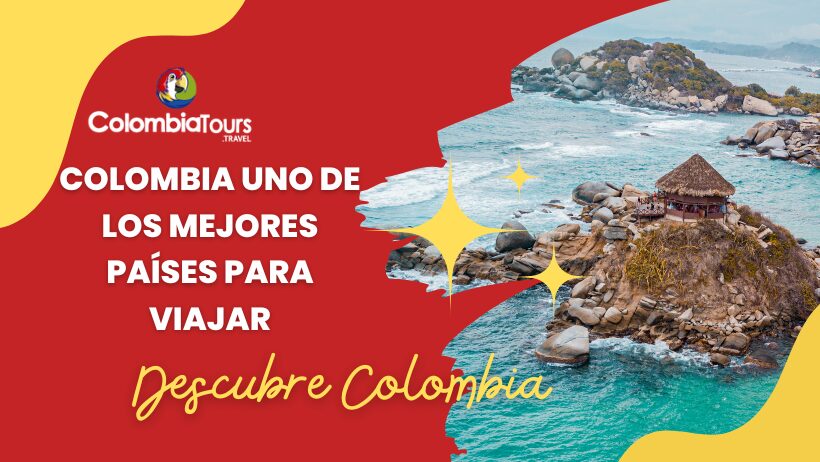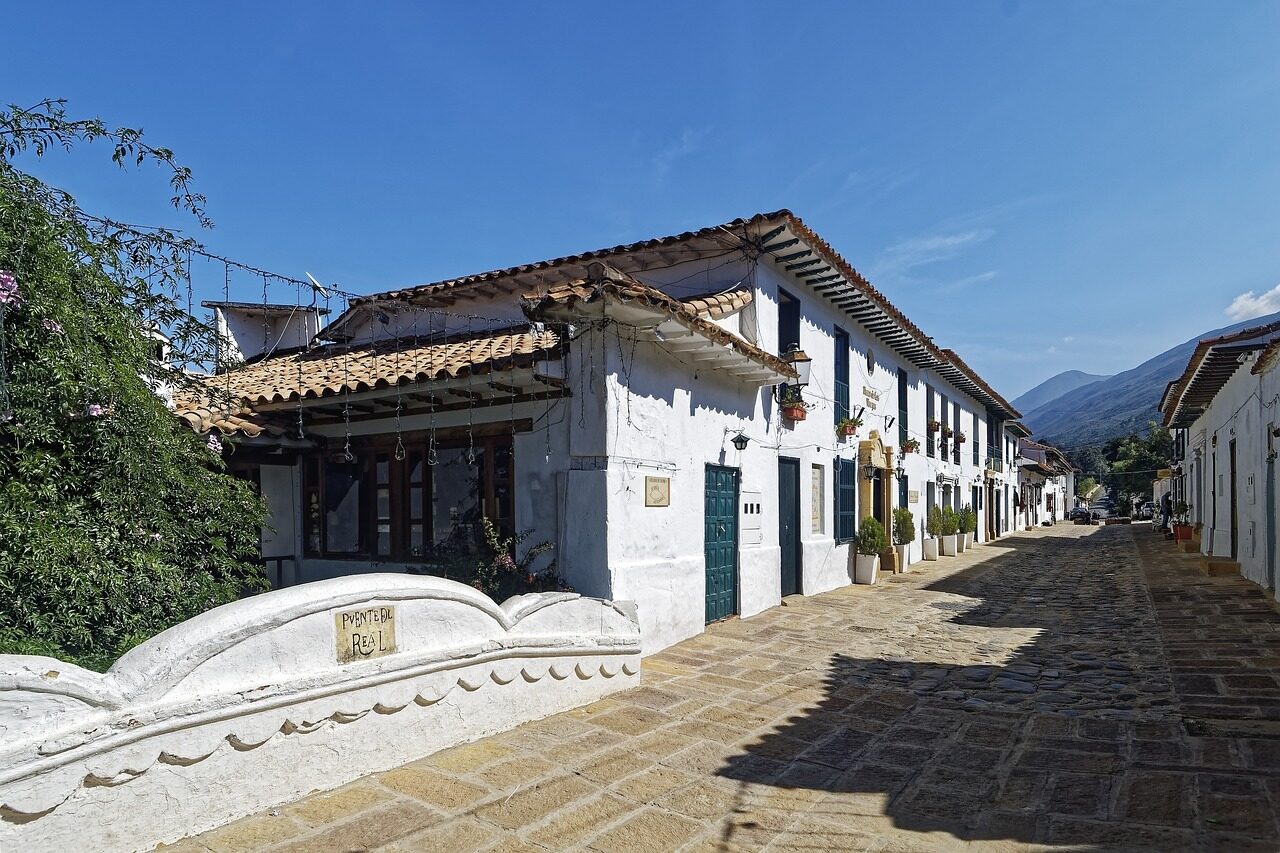
Colombia, one of the best countries to travel to, has positioned itself in recent years as a key destination in the world thanks to its incredible diversity, stunning landscapes, and rich culture.
This country is not only famous for its vibrant cities and exotic beaches but also for being a hub of history, art, and nature.
Through this blog, we will explore why Colombia is an essential selection on Lonely Planet’s “Best in Travel” list and other travel editorials. Next, we will give you a list of some reasons why Colombia is one of the best countries for your trip.
1. Su Biodiversidad
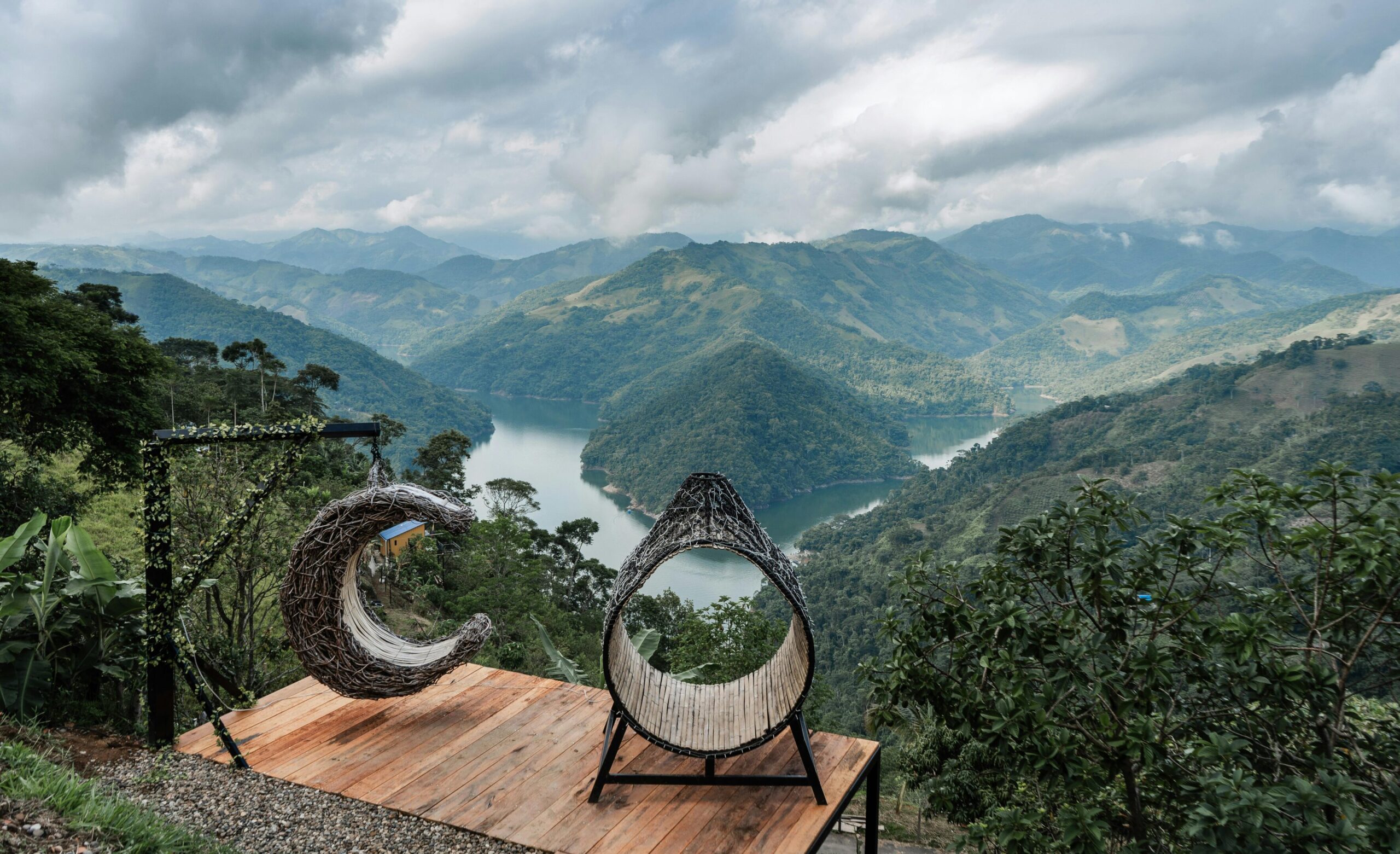
Colombia, a jewel of global biodiversity, is a fascinating destination that offers a mix of natural and cultural experiences for those seeking adventure and connection with nature. This country, located in the heart of South America, stands out for its privileged position in the equatorial zone, which gives it a diverse climate and, as a result, one of the richest varieties of flora and fauna on the planet.
A Paradise For Nature Lovers
The biodiversity in Colombia is simply astonishing. The country is home to more than 56,000 species, including around 10% of the world’s flora and fauna species. Imagine walking through the Colombian Amazon, where the greenery seems to have endless shades, and every step reveals a new wonder: from playful monkeys to majestic birds like the macaw.
Additionally, the country has coasts on two oceans, adding rich marine life to its spectacular biodiversity. For bird lovers, Colombia is an unparalleled destination, boasting the title of the country with the highest number of bird species in the world. Birdwatchers can delight in places like Los Nevados National Park or the Sierra Nevada de Santa Marta, where endemic and migratory species abound.
But Colombian biodiversity is not only about fauna. The jungles, forests, moors, and mangroves form a tapestry of ecosystems that change with every variation in altitude and climate. Tayrona National Park, for example, offers a spectacular combination of coastal mountains and Caribbean beaches, where the jungle meets the sea in an explosion of life and color.
Conservation and Local Culture
Participating in ecotourism and guided visits to indigenous and local communities not only enriches the traveler’s experience but also supports conservation and sustainable development. These interactions offer a unique perspective on how local culture has adapted and evolved in harmony with the natural environment.
In summary, visiting Colombia is immersing oneself in a world where nature overflows in every corner, and where every encounter, whether with a colorful toucan or a wise community leader, deepens the appreciation and respect for this incredible planet. Colombia is not just a destination to see but to live, feel, and deeply connect with life in all its forms.
2. Lovely wheather
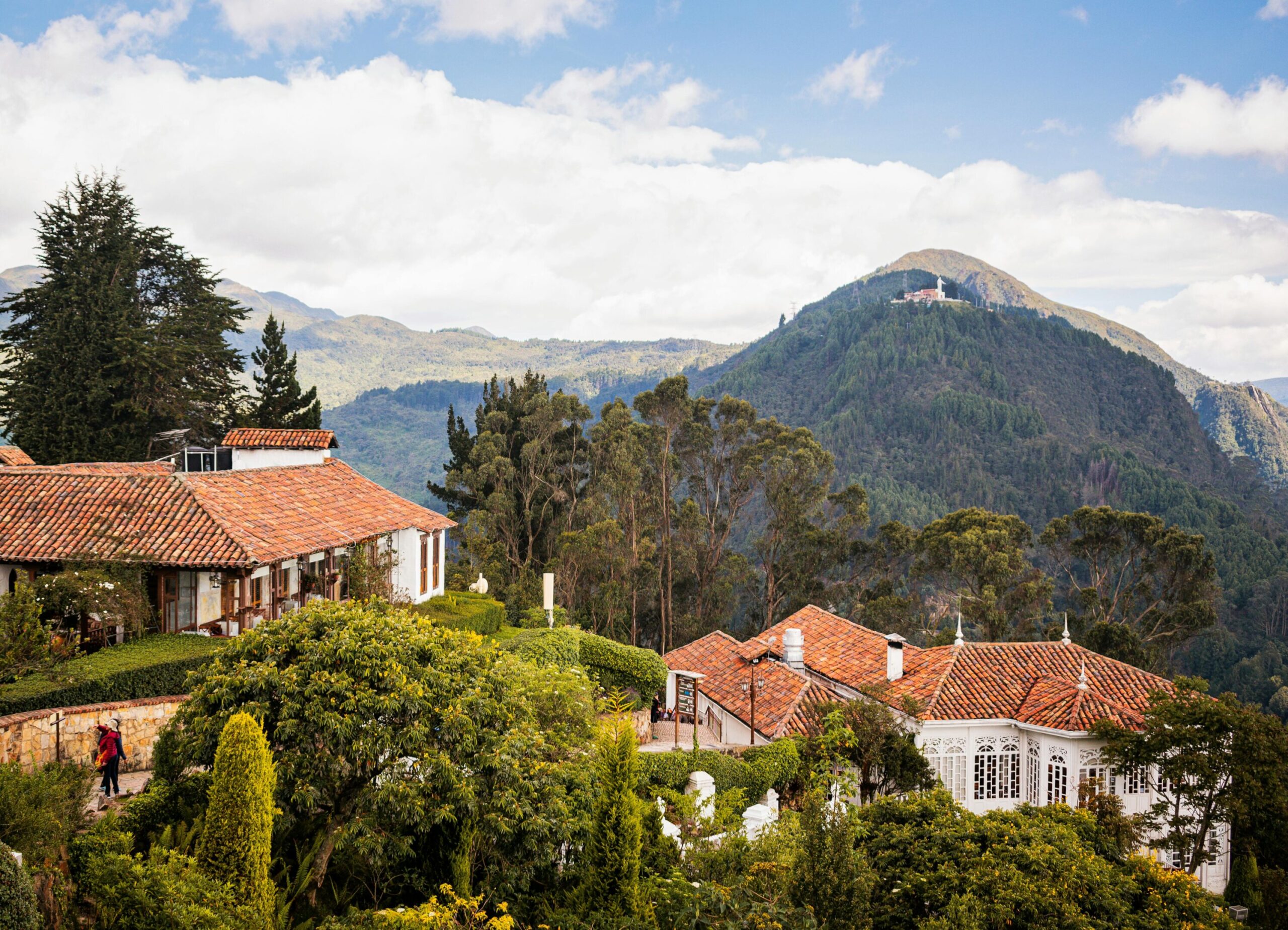
Colombia is a country of climatic contrasts marked by its topographic and geographic diversity. Thanks to its proximity to the equator, Colombia experiences a variety of climates that vary significantly from one region to another.
Tropical and Savannah Climates
In the coastal regions and the eastern plains, tropical climates prevail. Cities like Barranquilla, Cartagena, and Santa Marta enjoy warm temperatures throughout the year, with averages above 24°C. These areas also have well-defined seasons between dry and rainy periods, with most of the rainfall concentrated in certain months of the year.
Arid and Semi-arid Climates
In contrast, the La Guajira peninsula and areas inland like the Tatacoa desert experience arid and semi-arid climates where precipitation is scarce, and temperatures can be very high, often exceeding 25°C. These areas have little vegetation and high levels of solar radiation.
Temperate Mountain Climates
Mountainous regions, especially in the Andean zone, have temperate climates that vary with altitude. Cities like Bogotá, located over 2,600 meters above sea level, have a cooler climate with temperatures ranging between 7°C and 19°C. Rainfall in Bogotá is more frequent during the months of April, May, October, and November, with two drier periods in the year.
Rainy Regions
The Colombian Pacific and areas like Chocó are extremely rainy, with precipitation that can exceed 7,000 mm annually, making these areas some of the rainiest in the world. Quibdó, for example, is known for its almost daily heavy rainfall.
Tropical Rainforests and Paramos
The Amazon region, largely covered by the rainforest, has an equatorial climate with high temperatures and abundant rainfall throughout the year. In contrast, paramos like the Chingaza National Natural Park have cold temperatures and a unique biodiversity adapted to these conditions.
Colombia’s climatic variety offers a dynamic setting that deeply influences biodiversity and human activities in the country. From warm beaches to cold paramos, each region offers a unique experience shaped by its particular climate. This diversity makes Colombia a fascinating destination to explore a wide range of natural and cultural landscapes.
3. A Great tourist places to visit
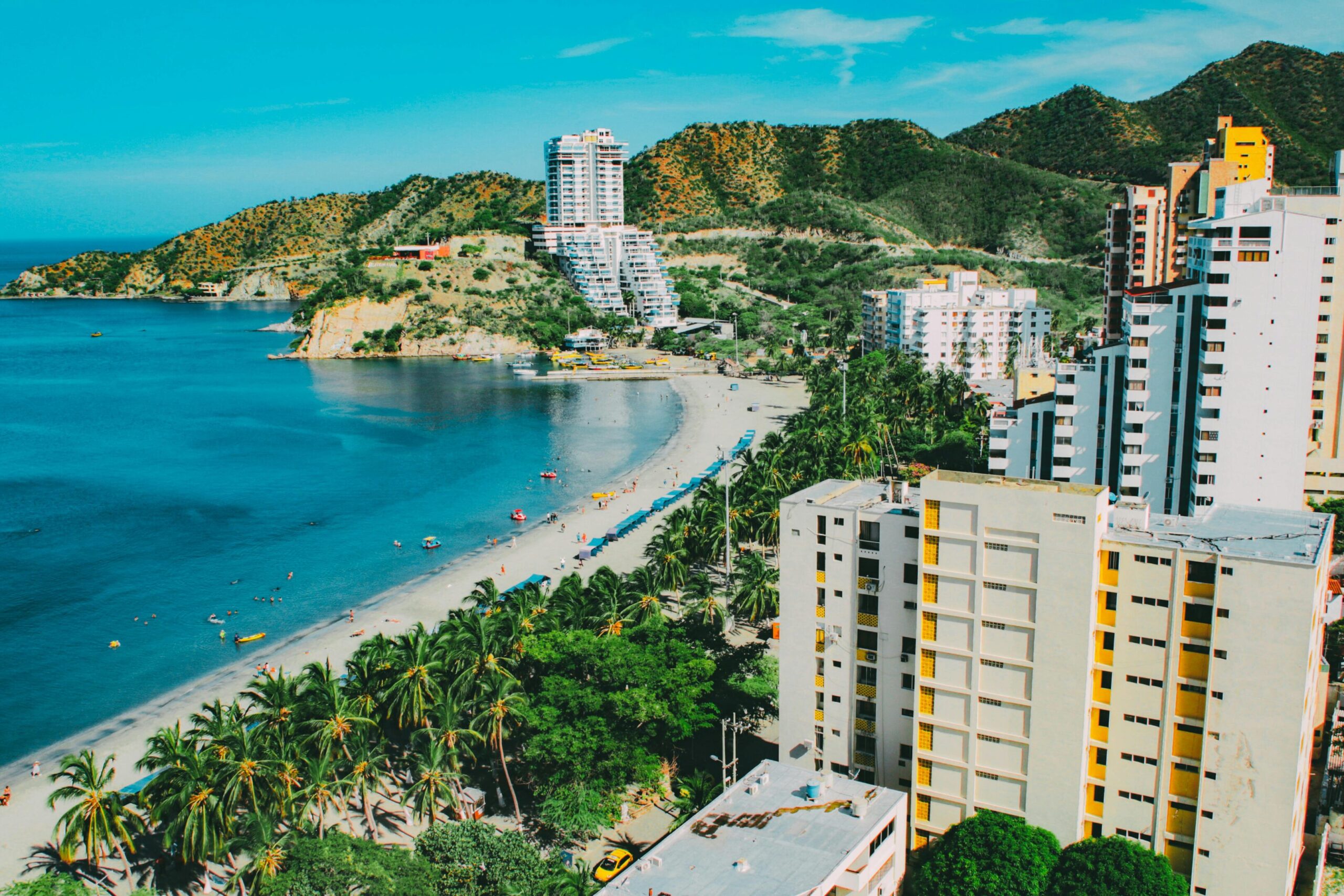
These are some of the places that Colombia has to visit. Colombia has many more destinations for you to discover, each with its own history, culture, and natural beauty. We invite you to explore the rich diversity of this wonderful country and discover all the treasures it has to offer.
Bogota: The Capital
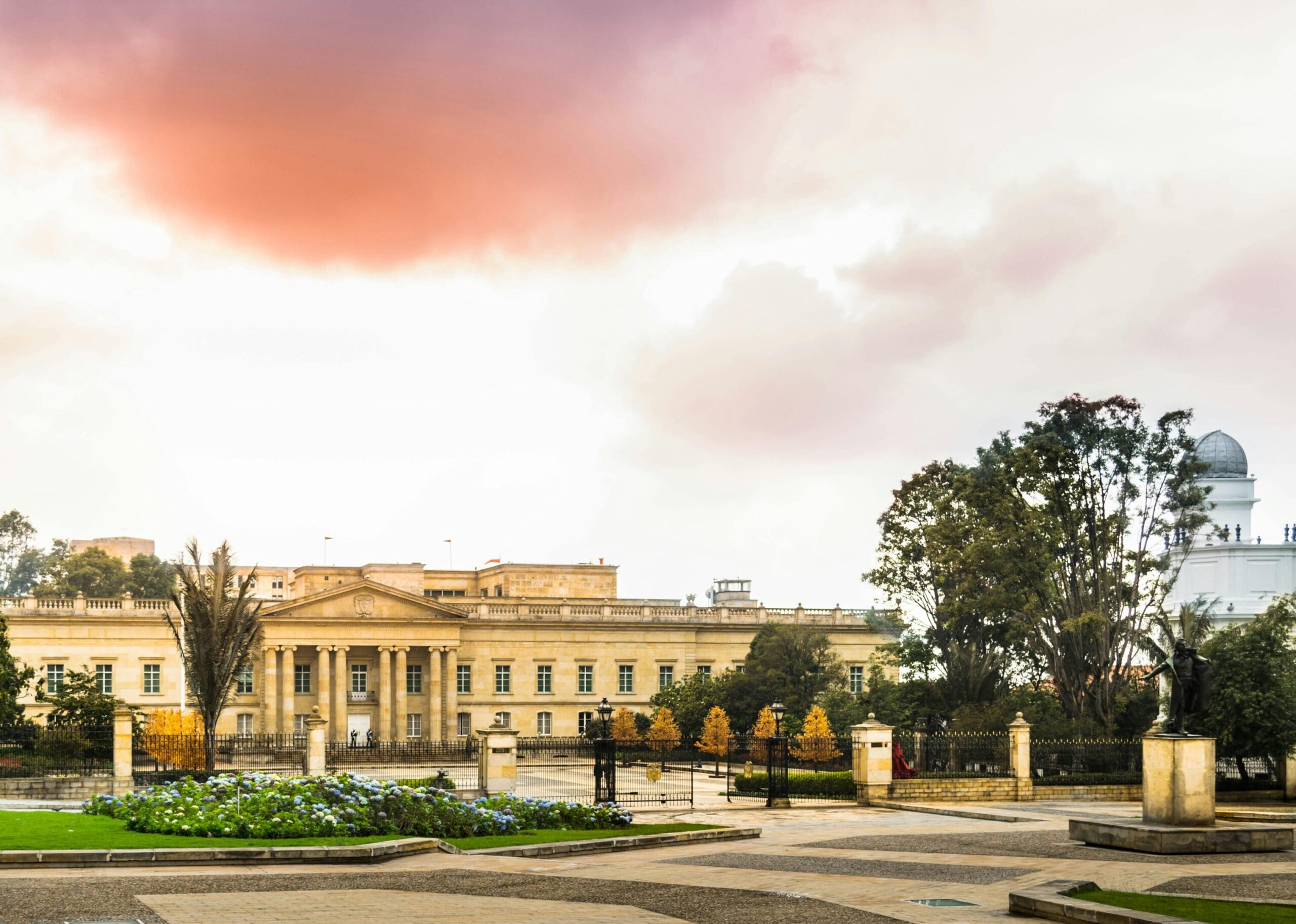
In your trip to Colombia, visiting the capital, Bogotá, is a city that combines modern buildings, world-class museums like the Gold Museum, the art museum, and a vibrant nightlife. Travelers can explore the historic neighborhood of La Candelaria, see impressive works by local and international artists, and enjoy local cuisine in numerous high-quality restaurants.
Bogotá is not only rich in culture and history but also a center of innovation and design. The city hosts international art and design events, attracting designers from around the world. The Zona Rosa and Parque 93 are focal points where fashion and lifestyle converge, offering a wide variety of boutiques, art galleries, and renowned chef restaurants. Furthermore, the opening of new cultural and artistic centers is on the rise, reflecting the dynamism and constant evolution of the city
Additionally, Bogotá is known for its extensive parks and green spaces, with Simón Bolívar Park being one of the most prominent, where locals and tourists enjoy outdoor activities such as concerts, sports events, and picnics.
Another significant space is the Bogotá Botanical Garden, which offers a serene escape from urban life and the opportunity to learn about Colombia’s native flora. These spaces not only provide a break from urban life but are also an integral part of any traveler’s route in the city, offering a perfect balance between urbanism and nature.
Cartagena: The Gem of The Caribbean
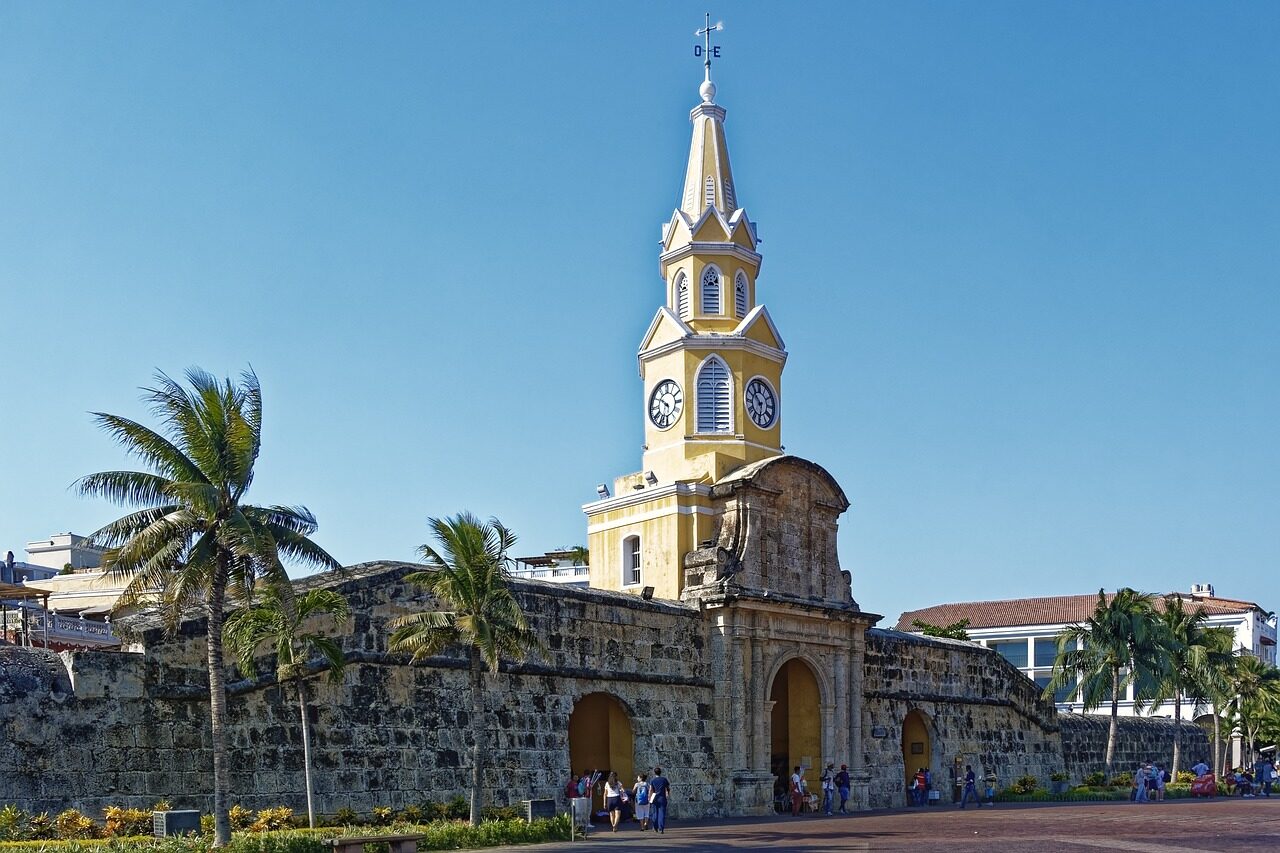
Cartagena is synonymous with romance and history, one of the best destinations in Colombia. Its well-preserved walls, which are a World Heritage Site, enclose a labyrinth of cobblestone streets, vibrant squares, and colorful colonial buildings. Additionally, the city is an excellent starting point for exploring the nearby Rosario Islands, ideal for outdoor activities such as snorkeling and diving
In addition to its historical heritage, Cartagena is renowned for its cultural festivals and artistic events that capture the essence of the Colombian Caribbean. One of the most prominent events is the International Music Festival, where musicians from around the world come together to fill the city’s squares and theaters with melodies. These types of events highlight the region’s rich musical tradition and offer travelers a unique perspective on Colombia’s cultural diversity.
Cartagena is also famous for its vibrant nightlife and luxurious hotels. Tourists can enjoy a night of dancing and music in one of the city’s many salsa clubs or relax in elegant rooftop bars that offer spectacular views of the illuminated city.
Additionally, the city has seen a boom in gourmet cuisine, with chefs combining modern techniques with traditional flavors to create dishes that are true works of art. This blend of history, culture, and modernity makes Cartagena not only a destination to admire but also to live and experience.
Medellin: The City of Endsless Spring
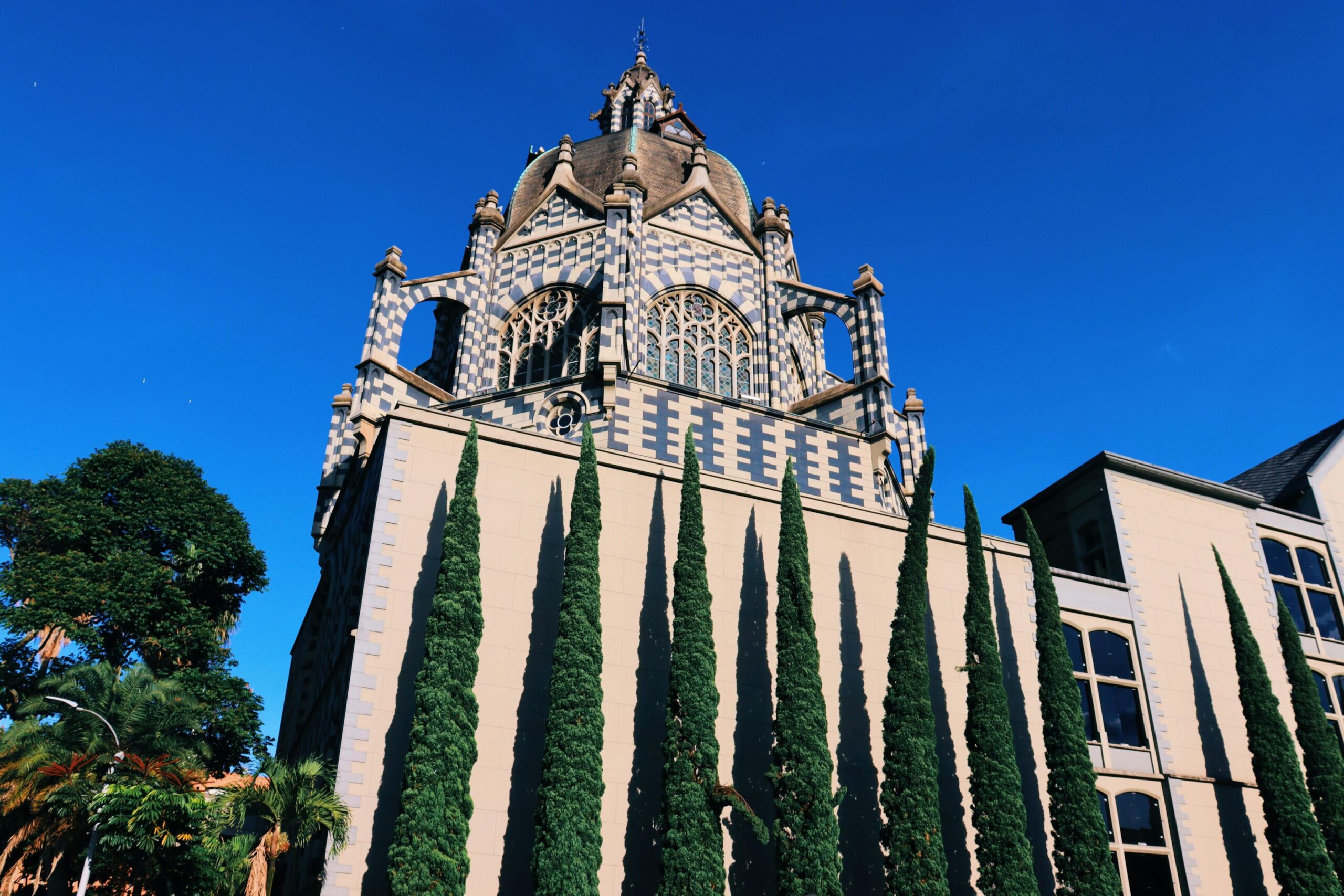
Medellín, known for its temperate climate and friendly people, is a shining example of renewal and transformation. Travelers can use the innovative metro system and cable cars to visit attractions such as Parque Arví and the Museum of Antioquia. Additionally, the city is famous for its inaugurations of modern parks and cultural spaces.
Medellín stands out not only for its innovation and culture but also for its vibrant artistic scene and festivals. One of the most emblematic events is the Flower Festival, a celebration that transforms the city into a display of color and joy every year. During this event, travelers and locals enjoy parades, concerts, and the traditional Silleteros Parade, where floral artists display exquisite creations made of flowers.
The city is also a hub for emerging artists and contemporary art galleries, providing a rich cultural tapestry that attracts art enthusiasts from around the world.
Furthermore, Medellín has made great strides in terms of sustainable development and urban projects that improve the quality of life for both its residents and tourists. The integration of green areas and urban parks such as Barefoot Park and the Botanical Garden of Medellín offers outdoor spaces for leisure and contact with nature.
The city has also been a pioneer in the use of sustainable technologies and urban renewal projects, making it a role model in terms of urban planning and sustainability in Latin America.
Eje Cafetero: Coffe Route
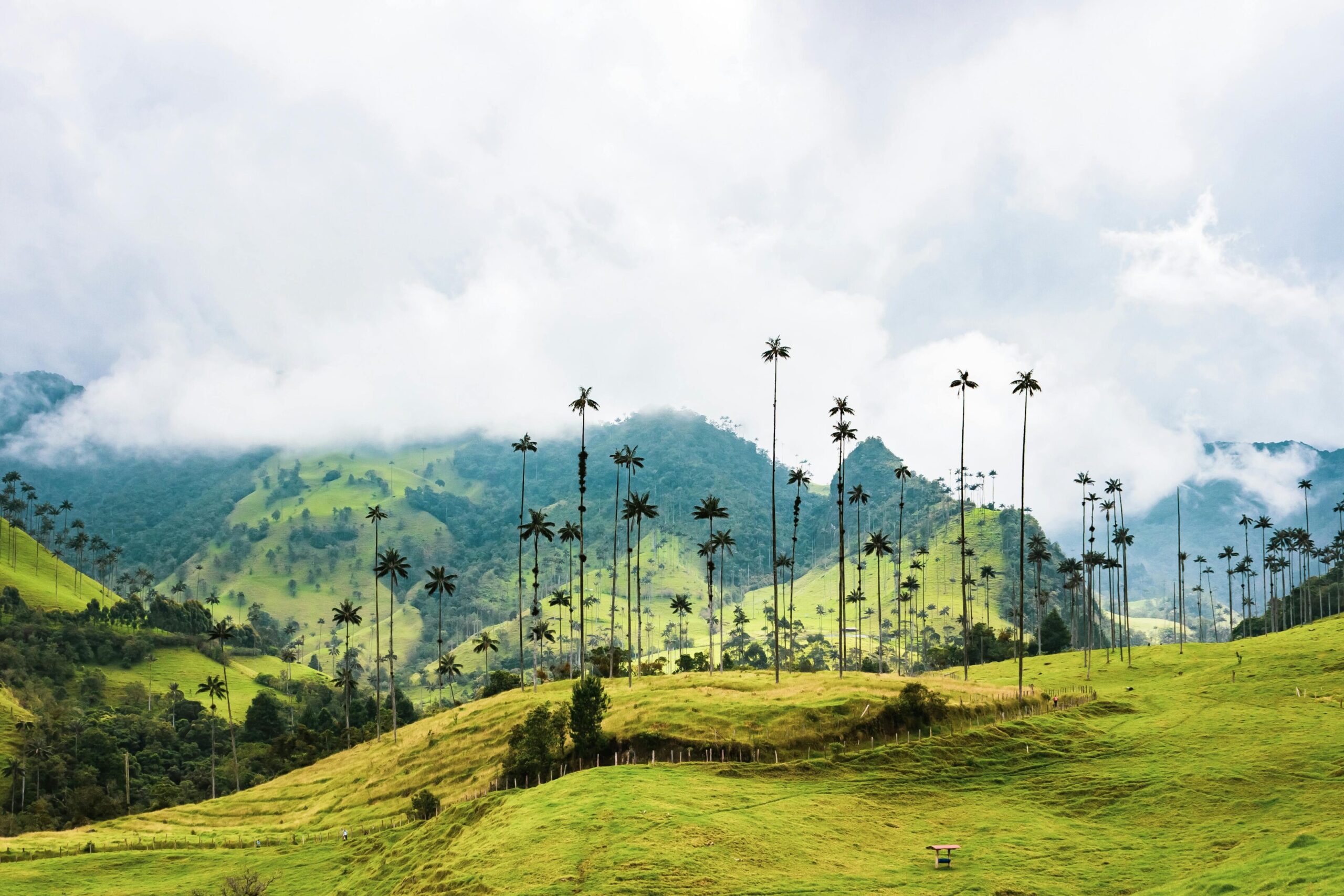
For coffee lovers, the Eje Cafetero offers an unforgettable experience. This region, also a World Heritage Site, allows travelers to learn about the coffee production process and enjoy the breathtaking view of its green landscape. Tourists can stay in traditional coffee plantations and explore the picturesque villages in the area.
In addition to coffee exploration, the Coffee Axis is also renowned for its impressive biodiversity. Travelers can immerse themselves in nature by visiting the Cocora Valley, where the iconic wax palms, Colombia’s national tree, can be found. This setting is ideal for hiking and enjoying the outdoors, offering views that are truly a living postcard of the country’s natural beauty. Here, the relationship between nature and local culture is palpable, providing an authentic and enriching experience for all visitors.
Another must-do activity in the Coffee Axis is visiting theme parks such as Coffee Park, where education about coffee production is combined with entertainment and fun for all ages. This park offers attractions like roller coasters, cable cars, and cultural shows, making it an ideal place for families and travelers looking to more deeply understand Colombian coffee culture while enjoying a pleasant and exciting environment.
Additionally, the region is home to multiple festivals and celebrations that high.
Santa Marta: Tayrona Park and the Lost City
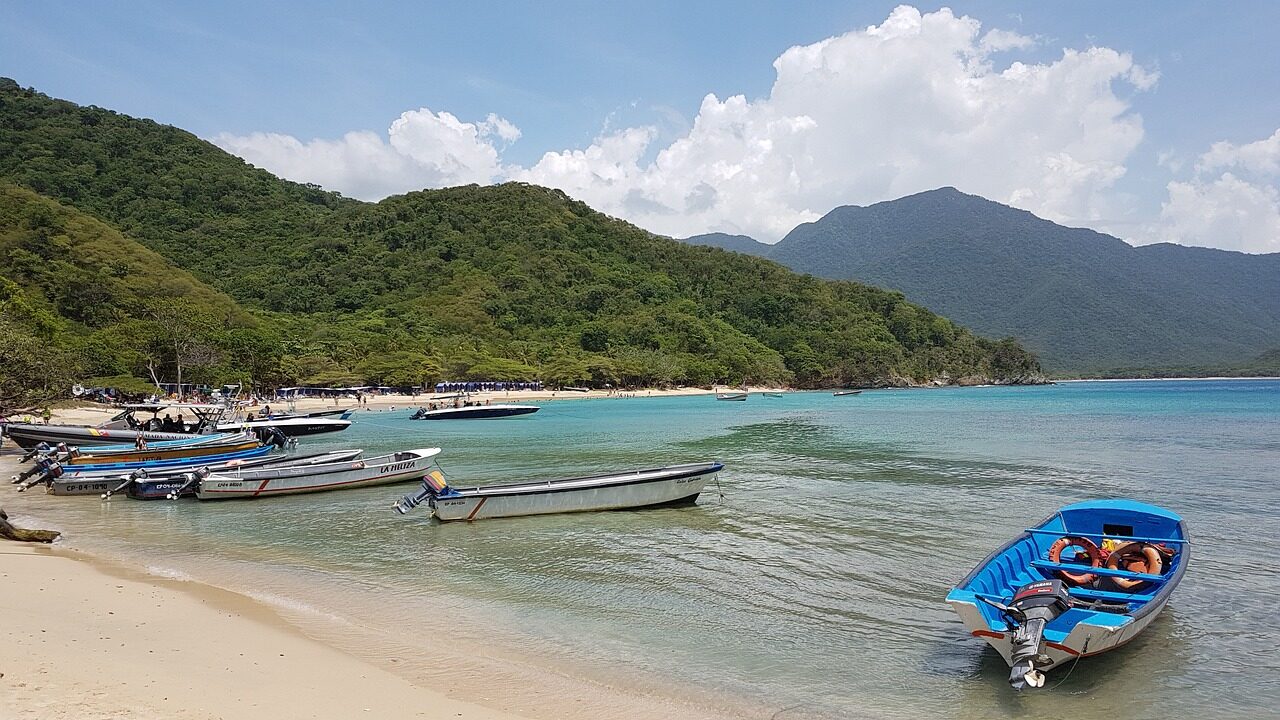
Santa Marta, located on the Caribbean coast of Colombia, is a city that fascinates tourists with its rich history and natural beauty. It is known for being the oldest city in Colombia and boasts a charming historic center where numerous restaurants, cafes, and small shops reflecting the vibrant local culture can be found.
Additionally, Santa Marta is famous for being the place where Simón Bolívar, the liberator of much of South America, spent his last days; his estate, now converted into a museum, is a site of great interest to anyone.
Here, travelers can immerse themselves in nature and experience the tranquility of being surrounded by one of the most biodiverse regions on the planet. Additionally, Santa Marta is positioning itself as a hub for sustainable tourism, with initiatives aimed at preserving its natural and cultural heritage while welcoming travelers from around the world.
In addition to its interesting historical context, Santa Marta is also the ideal starting point for exploring the surroundings, including the aforementioned Tayrona National Park, one of the most impressive destinations in the country. This park not only offers paradisiacal beaches and an opportunity to relax on the coast but is also an excellent place for hiking and spotting the diversity of local fauna and flora.
San Andres Island And Providencia: Caribbean Paradise
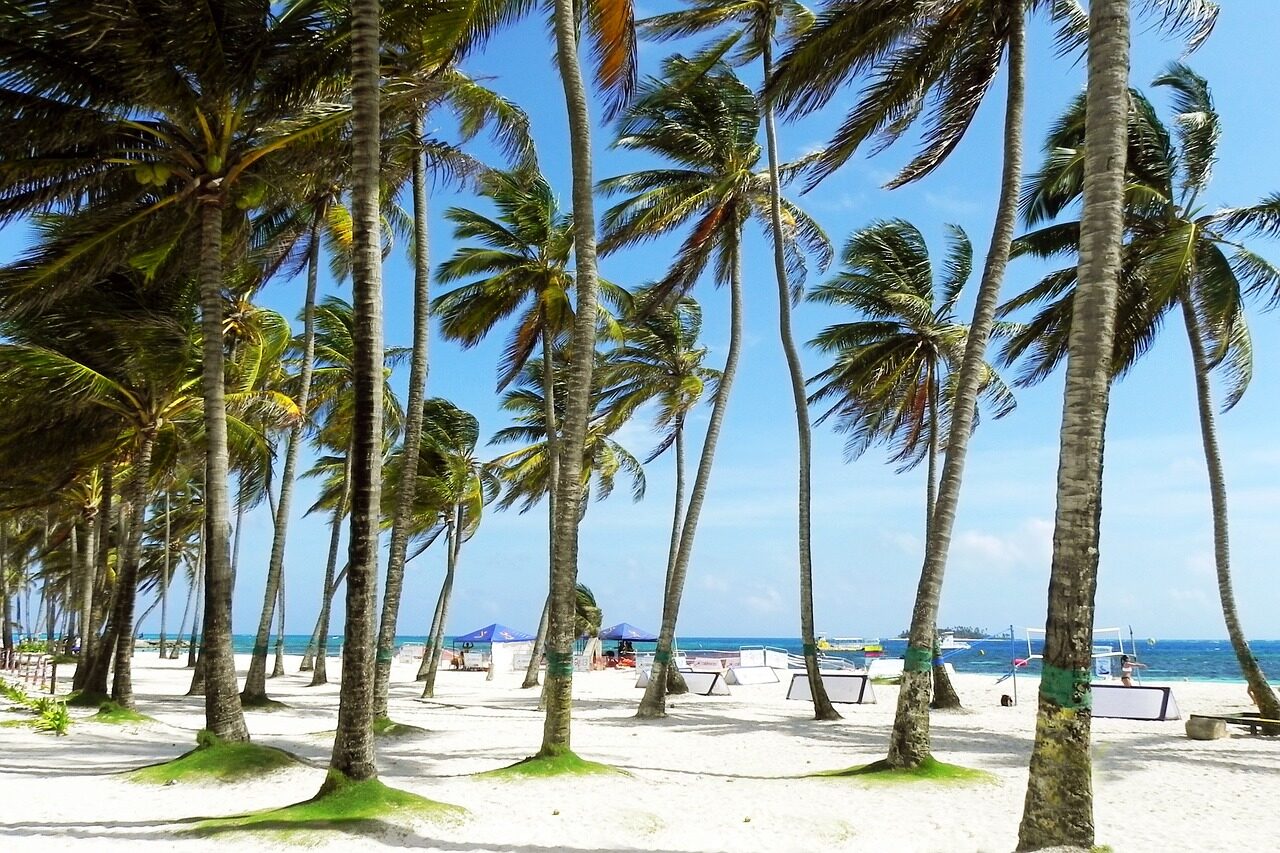
The islands of San Andrés and Providencia are perfect destinations for those seeking sun, sea, and sand. These islands offer some of the best diving spots in the world thanks to their coral reef, as well as a rich cultural influence that blends Caribbean, English, and Spanish elements.
Beyond their charming underwater landscapes, San Andrés is also renowned for its cultural enclaves that reflect a mosaic of African, English, and Spanish influences. Tourists can delve into local history by visiting sites such as the Casa Museo Isleña, which preserves the memory of the islanders’ traditions and way of life. Reggae and soca music resonate through the streets, inviting travelers to participate in vibrant festivals and celebrations that are often held on the island.
Another notable aspect of San Andrés is its gastronomic offering, which is an authentic representation of its cultural diversity. Visitors can delight in unique dishes such as rondón, a stew that combines fish, conch, and tubers cooked in coconut milk.
This culinary experience is complemented by panoramic views of the Caribbean, making each meal an unforgettable moment. Additionally, the island offers a variety of accommodation options, from boutique hotels to luxury resorts, ensuring that every traveler finds a place that suits their needs and budget.
3. Colombian Gastronomy
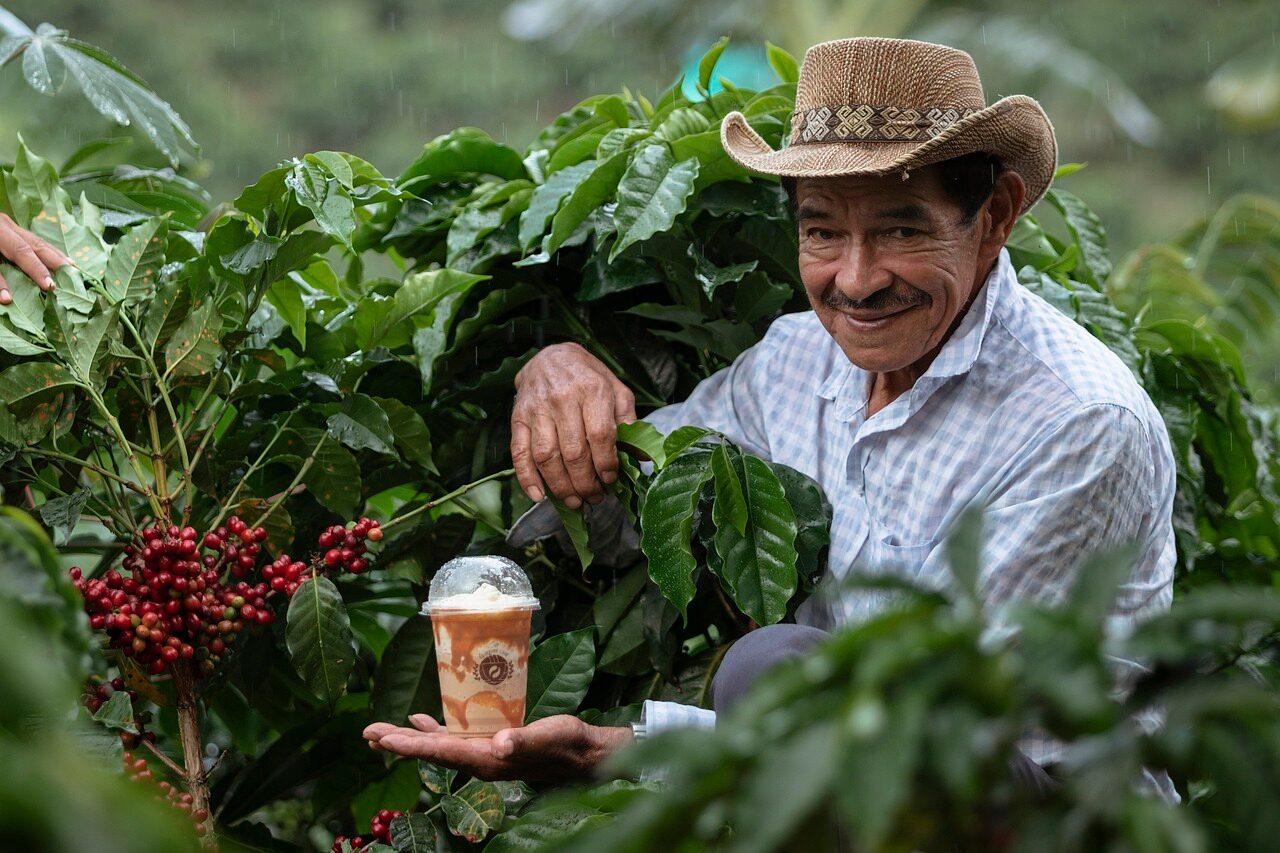
Colombia is a country known for its culinary diversity, reflecting the rich variety of climates and cultures that coexist in its territory. Each region contributes unique dishes that make Colombian cuisine a vibrant and delicious experience.
Traditional dishes
Bandeja Paisa: It is considered one of the most representative dishes of Colombia, especially from the Antioquia region. It includes ingredients such as beans, rice, ground or grilled meat, chorizo, fried egg, arepa, chicharrón, and avocado. It is a very complete dish that originally provided the necessary energy for field workers.
Ajiaco: This soup is typical of Bogotá and is characterized by its use of different types of potatoes, chicken, and the herb guasca, which gives it a distinctive flavor. It is served with capers, cream, and avocado.
Sancocho: This is a rich and hearty broth common in many regional variations throughout Colombia. It can contain chicken, beef ribs, or fish, and is cooked with cassava, plantain, corn,
Empanadas Colombianas: Las empanadas son un bocadillo popular que se encuentra en toda Colombia. Están hechas de masa de maíz y rellenas con carne, pollo o simplemente con arroz y verduras, luego fritas hasta que están crujientes.
Colombian Empanadas: Empanadas are a popular snack found throughout Colombia. They are made of corn dough and filled with meat, chicken, or simply with rice and vegetables, then fried until crispy.
Lechona: This festive dish consists of a whole roasted pig filled with rice, peas, pork meat, and spices, cooked slowly to obtain a deep and complex flavor.
Tamales: In Colombia, tamales vary by region but are generally made with corn or rice dough filled with meat, chicken or pork, wrapped in banana leaves and steamed.
Desserts y Snacks
Obleas: They are a popular sweet consisting of two thin cookies filled with arequipe (dulce de leche), blackberry jam, cream, and other ingredients like cheese or peanuts.
Bunuelos: They are fried dough balls containing fresh cheese typically enjoyed with hot chocolate or coffee.
Cocadas:A dessert made with grated coconut and sugar common on the Caribbean coast.
Colombian cuisine mirrors its cultural and natural biodiversity, offering everything from hearty and energetic dishes to delicate sweets that reflect the country’s tradition and modernity. Each bite tells a story of its indigenous, European, and African roots, a feast for the palate that invites you to explore Colombia not only through its landscapes but also through its irresistible gastronomic offerings.
4.Its Cultural and Historical Richness
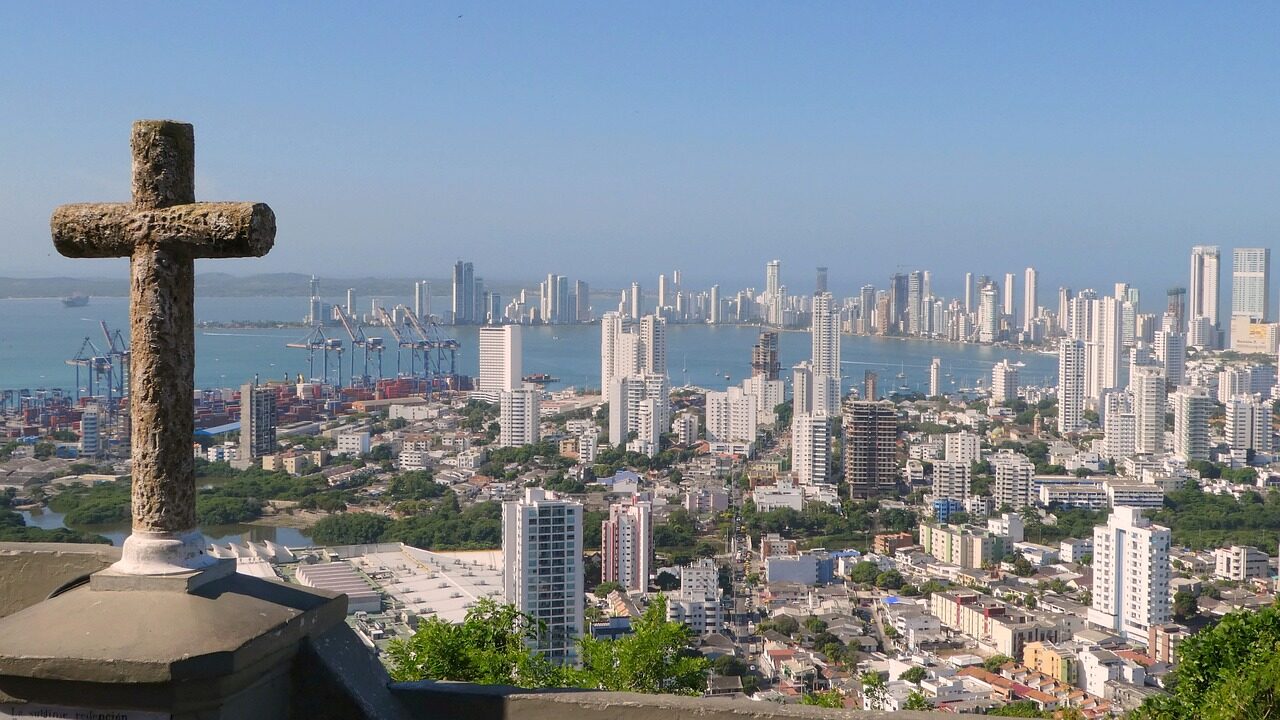
Welcome to Colombia, a country whose vibrant culture and rich history intertwine in every corner, from its mist-covered mountains to its sunny Caribbean coasts. Here, every street, every festival, and every melody tell a story that invites travelers to immerse themselves in its impressive diversity.
A Journey through History
Colombia, the land of El Dorado, has been the stage for important episodes since pre-Columbian times. The ancient Muisca, Tairona, and Quimbaya left a legacy of gold and myths, visible in museums and archaeological sites like the Lost City, which still captures visitors’ imagination today. The colonial era brought the foundation of cities that are architectural gems like Cartagena and Bogotá, whose walls and squares tell stories of pirates and conquerors.
Independence in the 19th century transformed Colombia into a melting pot of cultures and races, whose struggles and triumphs are reflected in the vibrant colors of its festivals and the warmth of its people. This rich historical tapestry unfolds in places like Popayán, known as the “White City” for its impressive colonial architecture, and in the vibrant living legacy of Palenque, a stronghold of Afro-Colombian culture.
Celebration of Culture
Colombian culture is a feast for the senses. The Barranquilla Carnival, with its overflowing joy and color, offers a spectacular display of the country’s cultural diversity. During the festival, the streets fill with music, dances, and masks celebrating the mix of indigenous, African, and European heritage that defines Colombia.
Music and dance are essential in Colombian life. Rhythms like cumbia and vallenato, born from the confluence of cultures, resonate in the air and are at the heart of family gatherings and celebrations. In cities like Cali, known as the salsa capital, music is felt on every corner, inviting everyone to dance to the rhythm of Colombian passion.
A Legacy in Stone and Color
In Cartagena, time seems to stand still. Its imposing fortifications and well-preserved historic center transport visitors to colonial times. The city’s architecture is a testimony to Colombia’s ingenuity and history, making it a must-visit for any history or architectural beauty lover.
Likewise, Bogotá is not only the country’s political capital; it is also its cultural heart. The Gold Museum offers a unique glimpse into pre-Columbian art, while the city’s vibrant cultural life is manifested in its numerous galleries, theaters, and cafes where art and life converge.
Colombia awaits travelers with open arms, offering a unique blend of history, culture, and hospitality that makes every visit unforgettable. From its natural landscapes to its lively cities, Colombia is not just a destination to see but to live. Come and discover this magical country where every corner has a story to tell and every experience is an invitation to stay.
Conclusion of Why Colombia is one of the best countries to travel to
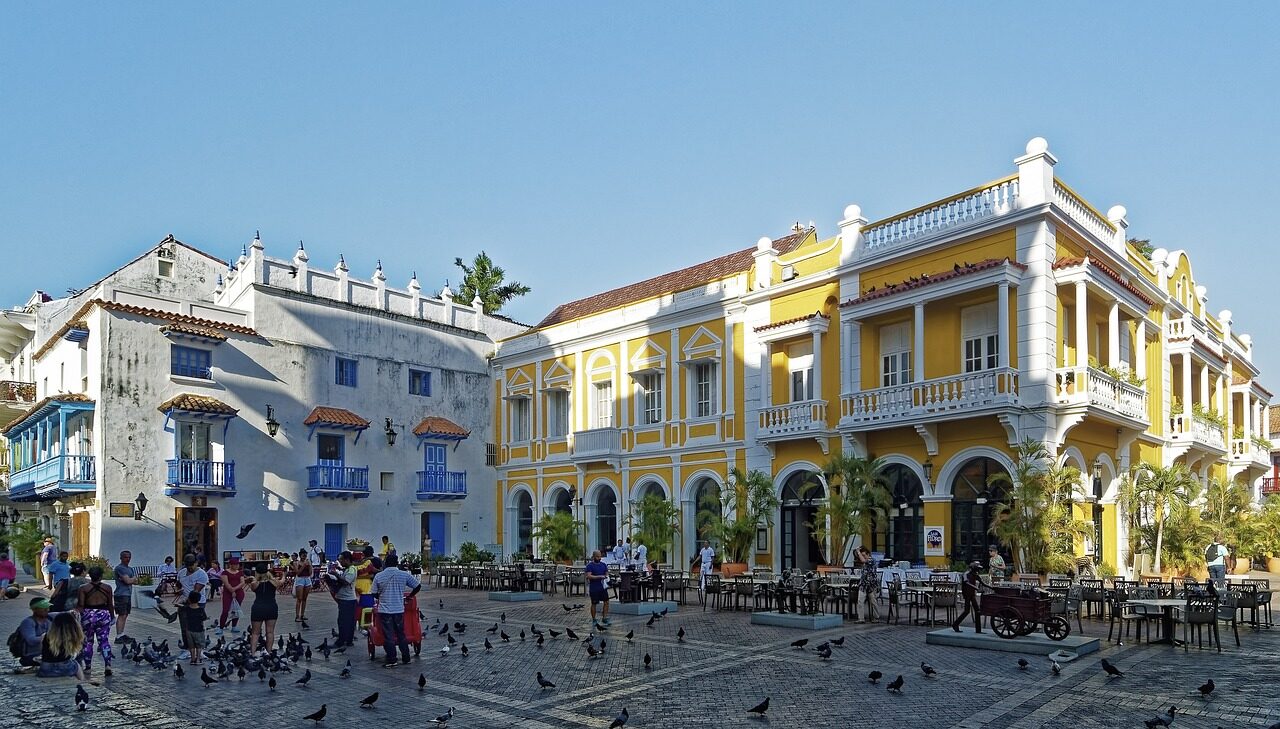
Colombia is a country that has it all from start to finish: from renowned museums, national parks, and idyllic beaches to vibrant cities full of culture and nightlife. Whether you are looking for a beach getaway, a mountain adventure, or an urban cultural experience, Colombia offers a value for money that makes it accessible and attractive to all travelers.
Visiting Colombia is not just an option, it is a must-visit destination for any serious traveler who wants to experience the best of the world in one place.
Explore Colombia Travel with ColombiaTours.Travel!

